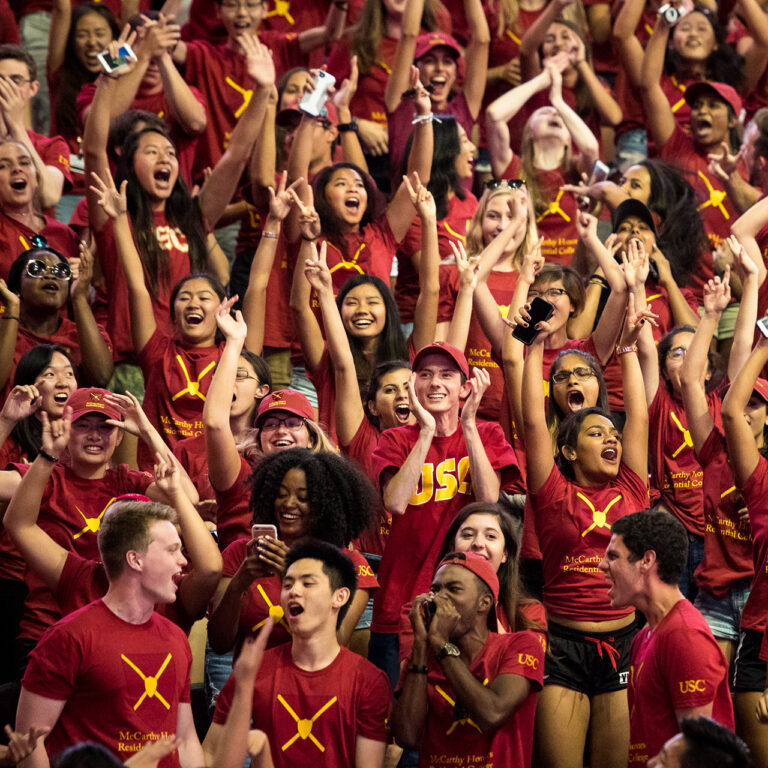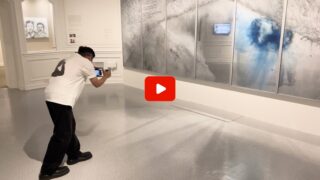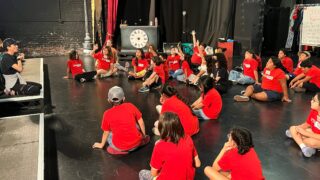Quetzal Arevalo and Kelly Filreis worked with Alexis Bard Johnson (left to right) on the exhibit. (USC Photo/Stephen Gee)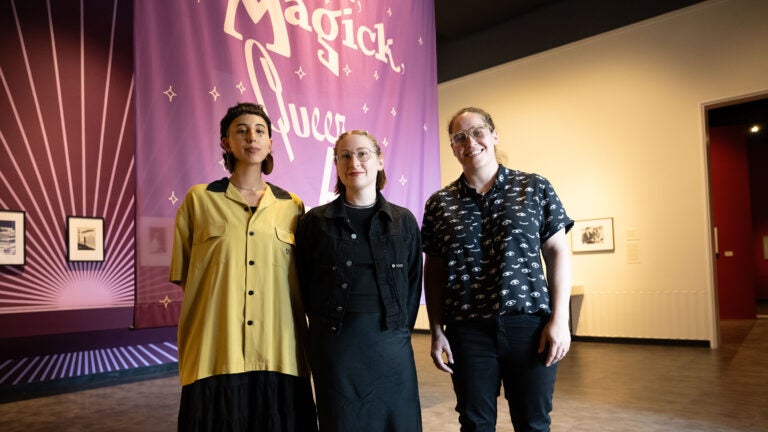
Social Impact
Exploring hidden queer histories at the USC Fisher Museum of Art
STORY AND VIDEO: A ONE Archives exhibit running during LGBTQ+ History Month and beyond explores early role sci-fi fandom and occult interests played in creating community.
At a time when being LGBTQ+ could get you fired from your job — or worse — queer people had to work at finding each other and creating safe spaces to gather.
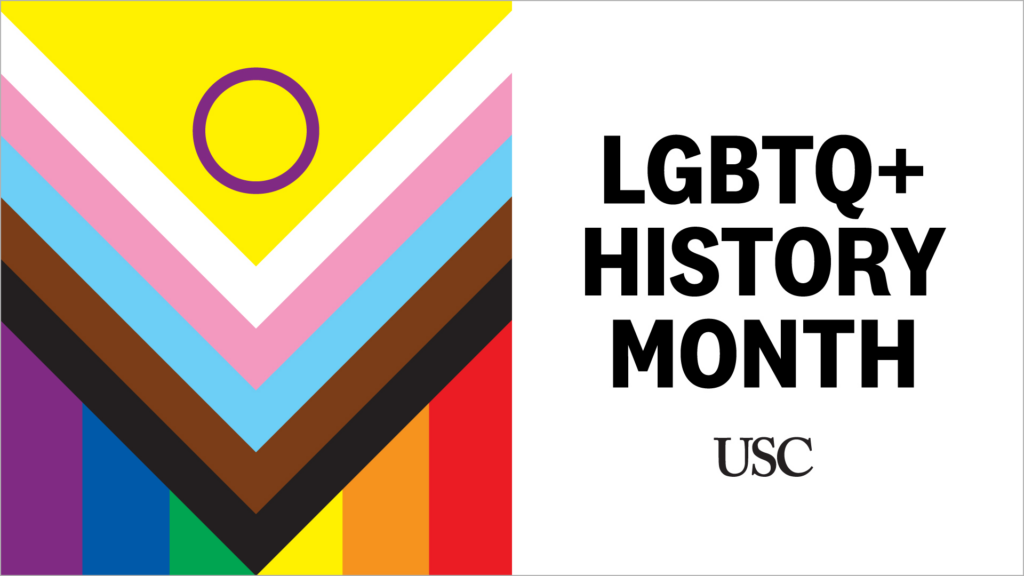
The new exhibition Sci-Fi, Magick, Queer L.A.: Sexual Science and the Imagi-Nation currently on display at the USC Fisher Museum of Art delves into how this community also was able to connect through their mutual science fiction fandom and occult interests.
“People who wanted to exist outside the mainstream were trying to find like-minded people and communities that were at least somewhat accepting of them,” exhibition curator Alexis Bard Johnson said. “It’s not that the spaces were exclusively queer or even meant to be, but they were places where people were thinking about a permission or freedom to explore and behave differently.”
The exhibition focuses on artists, scientists, and visionary thinkers in Los Angeles from the late 1930s through the 1960s who created a world of their own making outside of societal norms through films, photographs, music, costumes, illustrations, writing and more.
Coinciding with October’s LGBTQ+ History Month and running through Nov. 23, the exhibit is under the umbrella of the Getty’s PST ART, a Southern California arts initiative with the theme of Art & Science Collide. It is also the first major collaboration between ONE Archives at the USC Libraries, the largest repository of LGBTQ+ materials in the world, and the USC Fisher Museum.
Johnson — who also serves as ONE Archives’ head curator — has been working on the exhibit for five years and was later joined by assistant curator Kelly Filreis and curatorial assistant Queztal Arevalo. They believe the exhibit shows how science fiction fandom and the occult are integral in providing a nuanced and complete understanding of early queer history in L.A. and the United States — places that provided opportunities for self-expression and self-determination that defied the conservative social norms of the times.
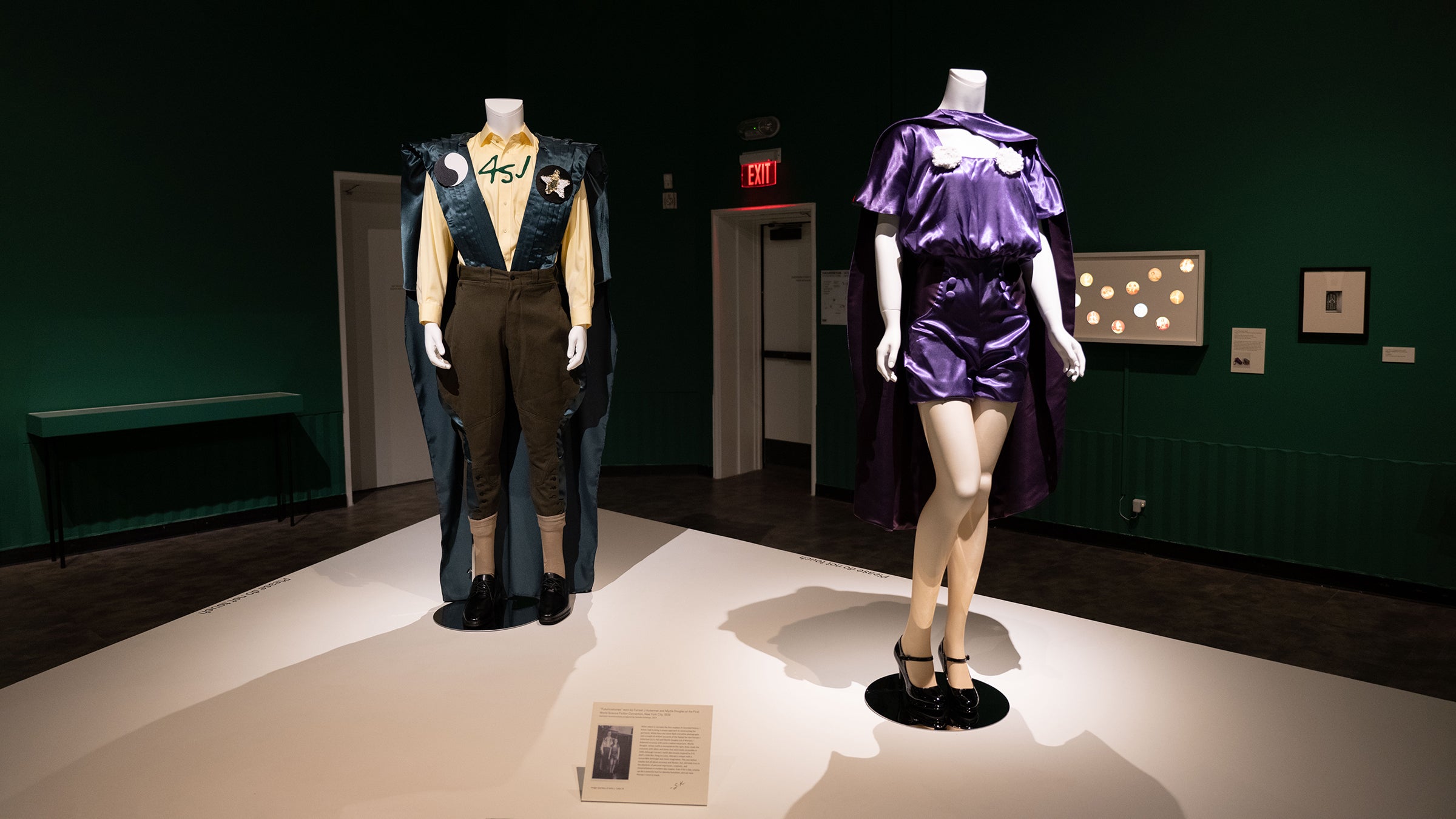
“It’s spanning a lot of L.A. history and looking at it through a slice or angle that I think a lot of people haven’t seen before,” Johnson said. “A lot of ways that we use ‘queer’ now, it really does apply to this period. They were playing with gender and performance and identity.”
Queer L.A. connections
The striking exhibit consists of five distinct rooms and welcomes visitors with a giant wall map that showcases how such artists, scientists and visionary thinkers were loosely connected. Those highlighted include filmmakers Kenneth Anger and Curtis Harrington; pulp magazine illustrator Margaret Brundage; magazine editor Lisa Ben; artist and sci-fi writer Morris Scott Dollens; artist, actress and occultist Marjorie Cameron; journalist and historian Jim Kepner and others.
“The hope is that people will come in and maybe they know one or two names,” Johnson said. “Through this map and through the exhibition, they can find other names and artists and people and places they’re also interested in. We really tried to make it as viewer-friendly and welcoming as possible.”
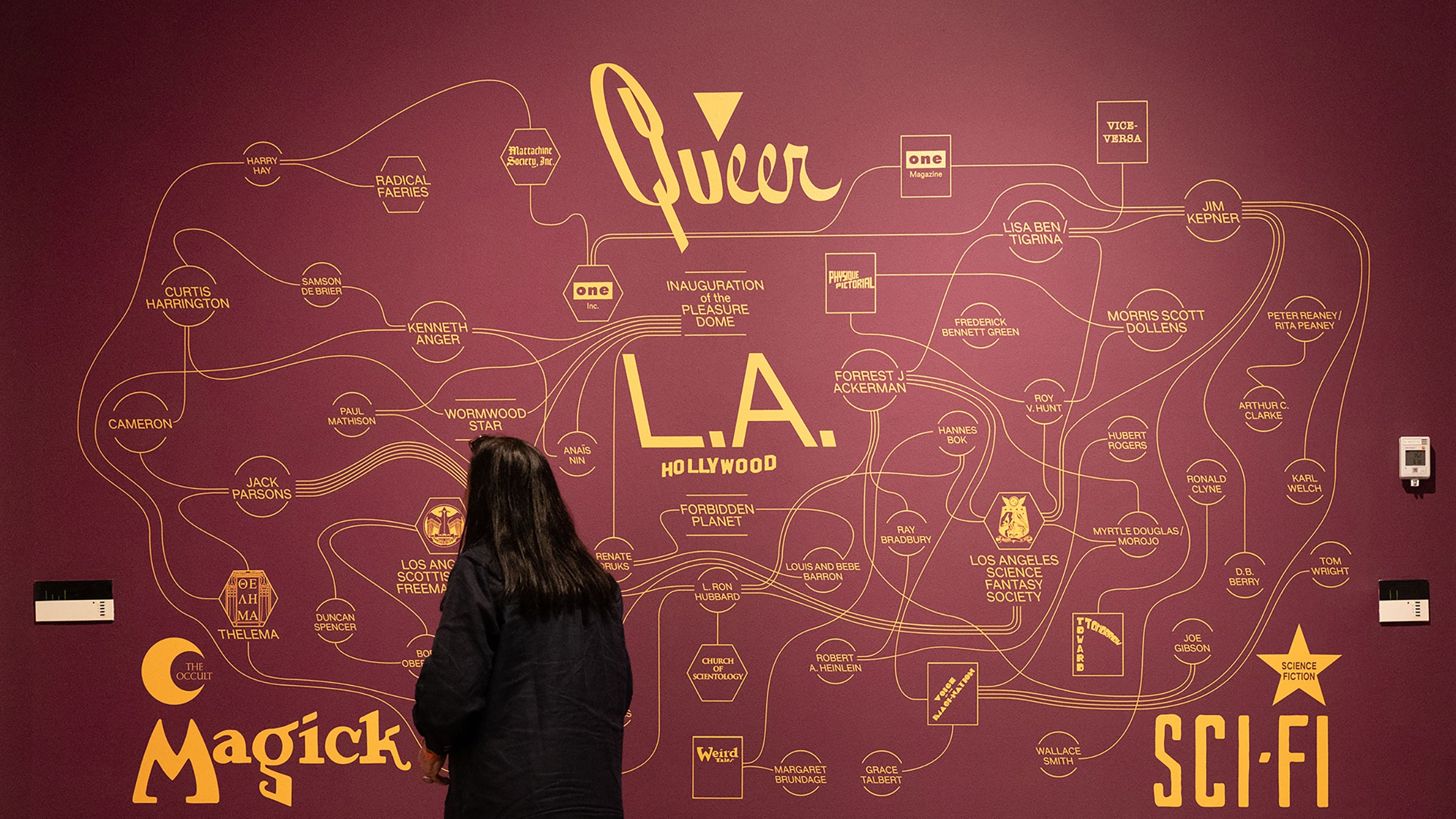
Filreis believes the exhibit is relevant for people of all ages and hopes it will draw plenty of younger LGBTQ+ visitors.
“I think they’re questioning systems that have always been in place that maybe they want to challenge,” she said. “The people in our show are great models of how previous generations tried to do that. The urgency is built into the material because it was built into the period it came from.”
Arevalo said that her personal hope is that as many “outcasts” or “people who identify as being strange or a nerd” as possible will experience the exhibit.
“I think it really is about a group of outcasts — people who were not part of normative society,” she said.
More LGBTQ+ events in October
Since there are few students on campus during LGBTQ+ Pride Month in June, October’s LGBTQ+ History Month provides an opportunity for USC to celebrate and observe lesbian, gay, bisexual and transgender history in a variety of ways across campuses. Here are some of the events taking place:
- USC Visions and Voices presents Gender, Queerness, Disability, and the Arts — a Conversation with A. Laura Brody and Brontë Grimm at 11 a.m. Tuesday, Oct. 1, at Taper Hall on the University Park Campus. Artist and curator Brody and multidisciplinary artist and queer and trans disability activist Grimm will discuss their artistic trajectories, aesthetic practices and experiences as disabled, queer, trans artists working today.
- USC Fisher Museum of Art presents Radical Imagination: Queer Stories through Sci-Fi Storytelling, an evening of readings and conversation delving into the world of science fiction and its intersection with queer narratives. The event begins at 6 p.m. on Thursday, Oct. 3.
- The LGBTQ+ Student Center is holding an LGBTQ+ Spirit Day & LGBTQ+ History Month Celebration on Thursday, Oct. 17, in Hahn Plaza on the University Park Campus. The event will include screen printing and other activities.
- USC Fisher Museum’s Drag Me to Hell: Demonic Drag Performances and Costume Contest is inspired by queer pioneers in A. from the 1930s through the 1960s who found refuge — and each other — through their love of science-fiction and the occult underground. The free Halloween event begins at 6 p.m. Oct. 29 and culminates in a do-it-yourself costume contest for USC students.
- Los Angeles LGBT Center’s Advocate & Gochis Galleries will use material from ONE Archives at the USC Libraries for the exhibit Our Patch: LGBTQ+ Life from Cradle to Grave through Oct. 31. The exhibit showcases never-before-seen materials that provide insight into the organizing strategies and care practices of LGBTQ+ activists in L.A. at every stage of life.
